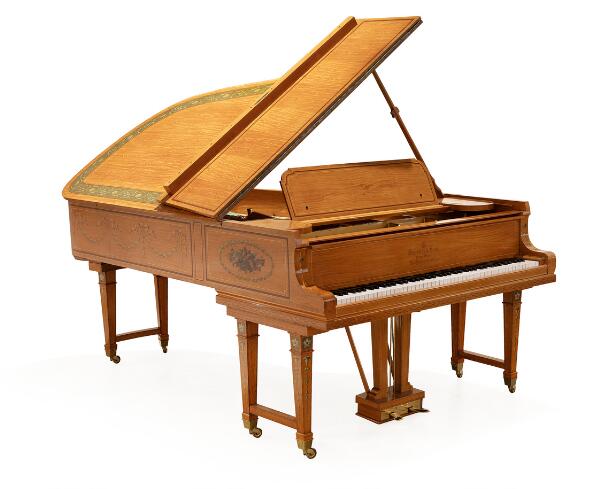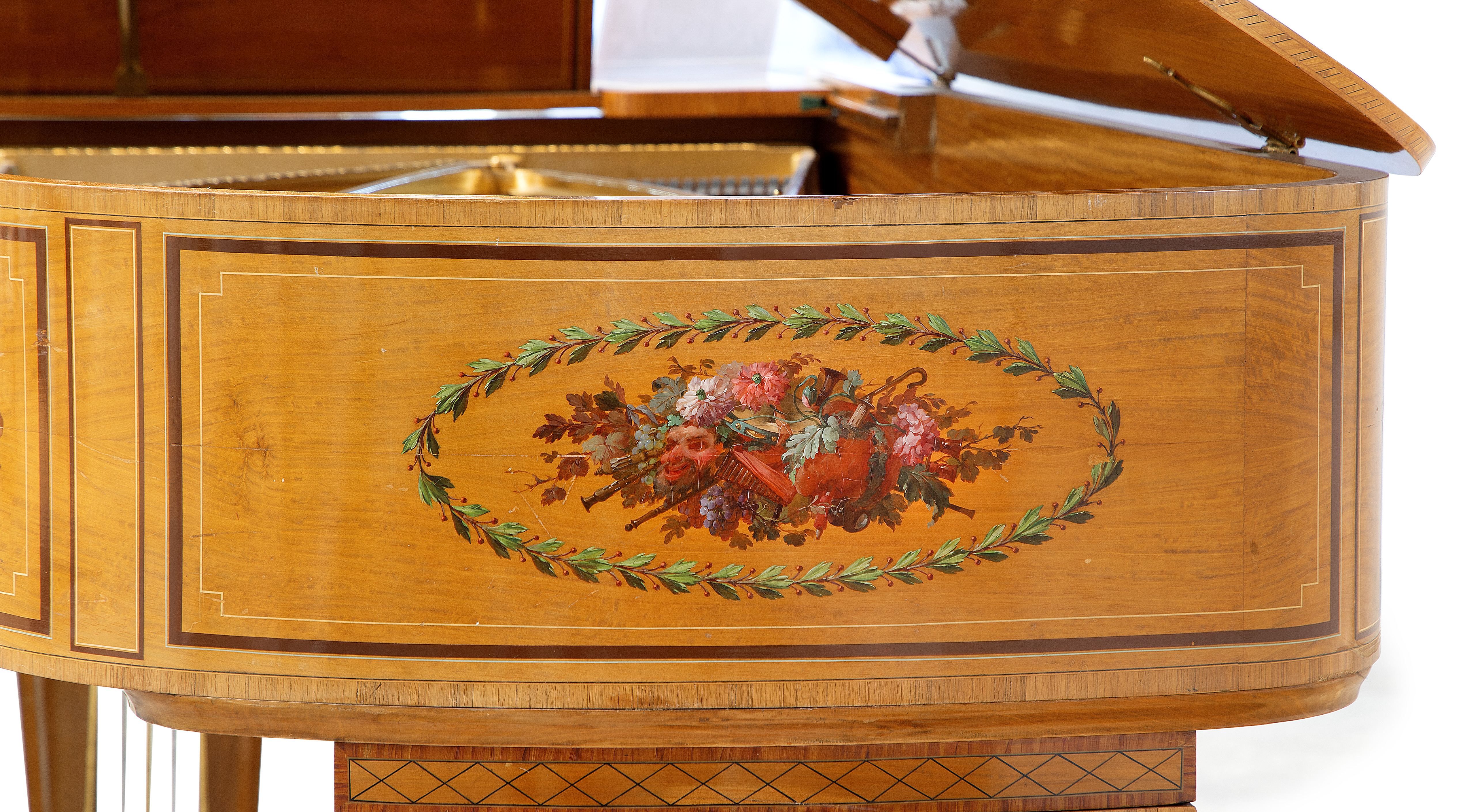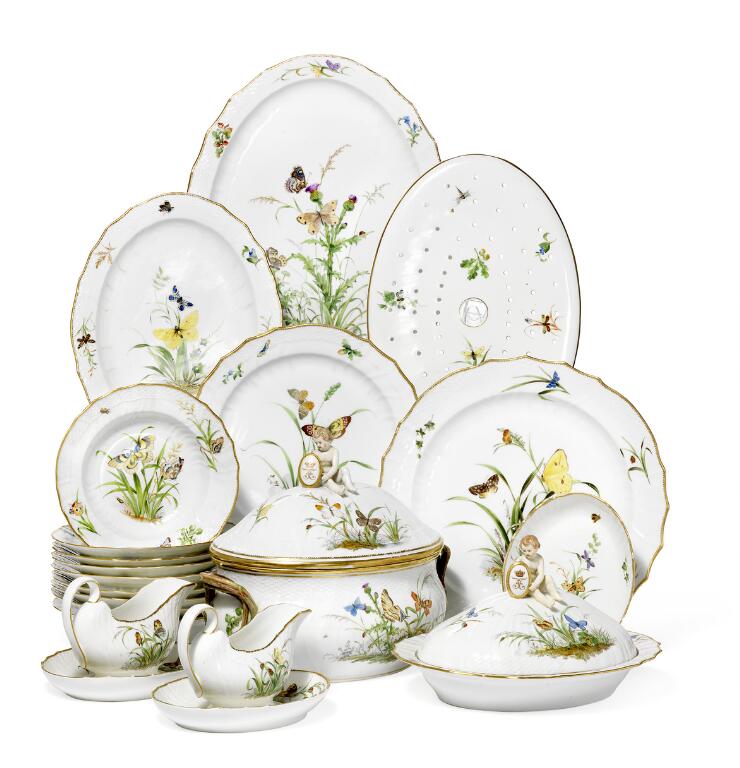The Fascination with Royalty
Historically, royalty has attracted widespread attention. With their unique status, they have continually served as representatives of a particular era, style, and way of life. At a Live Auction on 8 May, you will have the opportunity to experience three fascinating objects, each offering a unique glimpse into royal life.
|
Throughout history, royal families have helped define relations between European countries through marriages and alliances. As such, royal possessions can be seen as markers of a historical era, while also holding deeply personal stories. One such item is a Steinway & Sons grand piano in satinwood. It was owned by Empress Dagmar of Russia (1847–1928) and Queen Alexandra of England (1844–1925), daughters of King Christian IX and Queen Louise of Denmark. After the King's death in 1906, the two sisters decided to settle in Denmark and acquired Hvidøre near Klampenborg, where they decorated their home in a light and elegant style with furnishings from both Denmark and England, including the grand piano. At an upcoming Live Auction on Thursday, 8 May, we will be offering the grand piano, a dinner service from Princess Thyra of Denmark, and a signet ring belonging to the Danish courtier and feudal lord Ernst Norman, most likely a gift from King Christian IV. |
|
|
Rarities
Royal castles in changing styles over time, the varied lives and fates of family members, their importance to the country and its people, and possessions of remarkable character — these are exactly the things that fascinate Martin Hans Borg, expert in antique silver and royal collectibles at Bruun Rasmussen. He has worked in this field for several decades, and being able to present royal items at auction is both a professional and personal joy for him:
"It is only natural that we are fascinated by objects that once belonged to royalty, as they are a special lineage that has had — and continues to have — great significance in Denmark's history. Having royal items at auction is rare, and they usually represent exceptional quality, with extra layers added by their provenance, linking them to a castle, a personality, and the life that person lived."
Princess Thyra’s Dinner Service
The porcelain dinner service known as the “Butterfly Service” was part of the trousseau given by Crown Prince Frederik (VIII) and Crown Princess Lovisa of Denmark to their daughter, Princess Thyra of Denmark (1880–1945). This spectacular service, consisting of 163 pieces, was produced at the Royal Porcelain Factory (Royal Copenhagen) from the late 19th to the early 20th century. With its vibrant colors, gold detailing, and motifs of butterflies, flowers, beetles, berries, and nuts — adorning grand ragout dishes and soup tureens decorated with a putto holding a shield bearing Princess Thyra’s mirrored monogram — the service is an impressive centerpiece for any table.
After Princess Thyra, the service was inherited by her nephew and heir, Hereditary Prince Knud of Denmark (1900–1976), and subsequently by his daughter, Princess Elisabeth of Denmark (1935–2018). Before her death, the dinner service passed into Danish private ownership, where it has remained until today.
"The royal items we are offering at the auction are very different, yet they are all connected by history and lineage. They represent both museum pieces and objects of everyday use, and I hope they will find new, worthy homes where the stories of their former owners will be preserved for the future."
— Martin Hans Borg, expert in antique silver and royal collectibles.
Seal Your Identity with a Signet RingAt the upcoming auction, you will find a rare signet ring featuring a carved rock crystal with the name and coat of arms of the Danish courtier and feudal lord, Ernst Norman (1579–1645). Norman had an impressive career at the court of King Christian IV (1577–1648) — serving as a page, royal travel companion, chamberlain, cavalry company leader during the Kalmar War, and court steward. His significance is reflected in the numerous estates he was granted, including Koldinghus, Palsgård, and Selsø, and in his role as guardian to Hans Ulrik Gyldenløve, Christian IV’s son with Karen Andersdatter. The ring was likely crafted in connection with Norman's appointment to Koldinghus in 1620 and may have been a royal gift, as it closely resembles the king’s own signet ring, dated around 1625, which is preserved today in the Royal Danish Collection at Rosenborg Castle. |
Want to Learn More?
Learn more about the royal objects at the talk:
“Tales of Fate – the Feudal Lord’s Signet Ring, the Princess’s Dinner Service, and the Empress’s and Queen’s Grand Piano”, held on Saturday, May 3 at 3:00 PM by Martin Hans Borg, expert in antique silver and royal collectibles. The talk will take place at our auction house, Nørgaardsvej 3 in Lyngby.
Everyone is welcome, and no registration is required. Read more here.

Asian decorative art, decorative art, furniture and carpets
8 May at 1 PM
For further information, please contact:
|
|
Martin Hans BorgMartin Hans BorgChief Specialist / Russian Paintings & Works of Art / København |



